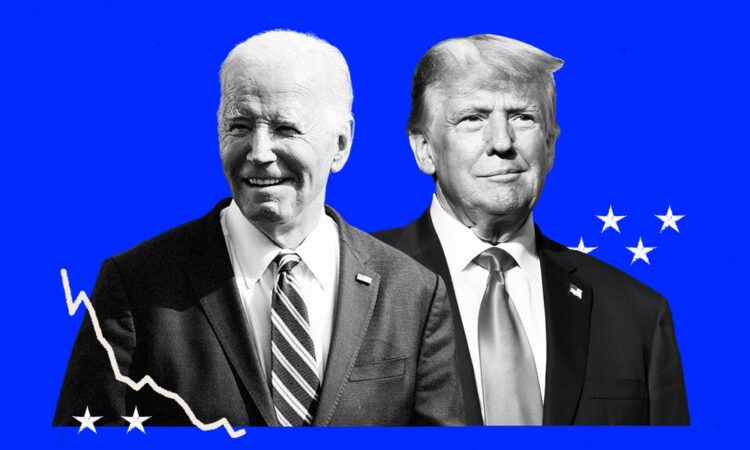
Labor
Reuters
Biden has long been an ally of organized labor — even becoming the first sitting US president to walk a picket line last year — but Trump is looking to chip away at the president’s union support this fall.
In April 2019, Biden launched his 2020 presidential campaign at a Teamsters union hall in Pittsburgh, putting his primary rivals on notice of his longtime relationship with organized labor. At that time, labor advocates were pushing hard to allow fast-food employees at restaurants like Chipotle and McDonald’s to unionize.
Once in office, Biden prioritized passage of the bipartisan infrastructure law, with one of its selling points being the creation of thousands of well-paying union jobs. And last year, Biden’s Department of Labor tweaked a rule in how it calculates prevailing wages for construction workers, with the changes affording them higher pay and more workplace protections.
In recent decades, public-sector unions have become increasingly diverse, with more female, Black, and Latino members who have often thrown their support behind Democratic candidates.
But Trump has been successful in earning endorsements from influential police unions like the Police Officers Association of Michigan and the Florida Police Benevolent Association.
Trump’s mission is clear: He wants to win over more union households in battleground states like Michigan and Wisconsin. In 2016, Trump made strong gains with these voters, but Biden flipped many of them back into the Democratic column in 2020, promising robust support for the automobile industry. In January, Biden earned the backing of the United Auto Workers after joining them on the picket line, with UAW president Shawn Fain saying: “Joe Biden bet on the American worker while Donald Trump blamed the American worker.” Trump responded that Fain “didn’t have a clue.”
In March, Biden gave the auto industry slightly more time to adopt strict new rules for tailpipe emissions, in a huge win for organized labor, as automakers and unions were concerned about meeting the administration’s initial electric vehicle transition proposals. In a second term, Biden is poised to continue his administration’s push to advance EV production. Meanwhile, Trump has said that the transition to electric vehicles would decimate the auto industry and benefit China and Mexico.
A Gallup poll conducted in August found that 67% of Americans approved of labor unions, a marked increase from the 48% who backed unions in 2009.
With many Americans working multiple jobs and inflation continuing to take a toll on people, labor unions have fought for higher wages for employees. Looking at the Gallup survey, 61% of Americans said that unions help the economy more than they hurt it, a figure that exceeded the previous high-water mark from 1999.
Trump has made the economy the hallmark of his campaign, touting low pre-COVID-19 unemployment numbers, especially among Black Americans. In both September 2019 and February 2020, the overall unemployment rate hit 3.5%, which at the time represented a 50-year low.
When Biden took office in January 2021, the unemployment rate, which rose sharply during the COVID-19 pandemic, sat at 6.4%. But unemployment hit a modern low of 3.4% in both January 2023 and April 2023, a figure that hadn’t been seen since 1969. In April 2023, Black unemployment hit a record low of 4.7%.
The unemployment rate has risen since last year, and it remains at 4.0% as of June.
Biden has overseen a strong job market throughout much of his administration. In May, the US added 272,000 jobs, far exceeding the 182,000 jobs that were projected. The latest figure represents the 41st-straight month of job growth, which is tied to the president’s argument that his policies have created an economy in which the number of jobs — and wages — have risen.






